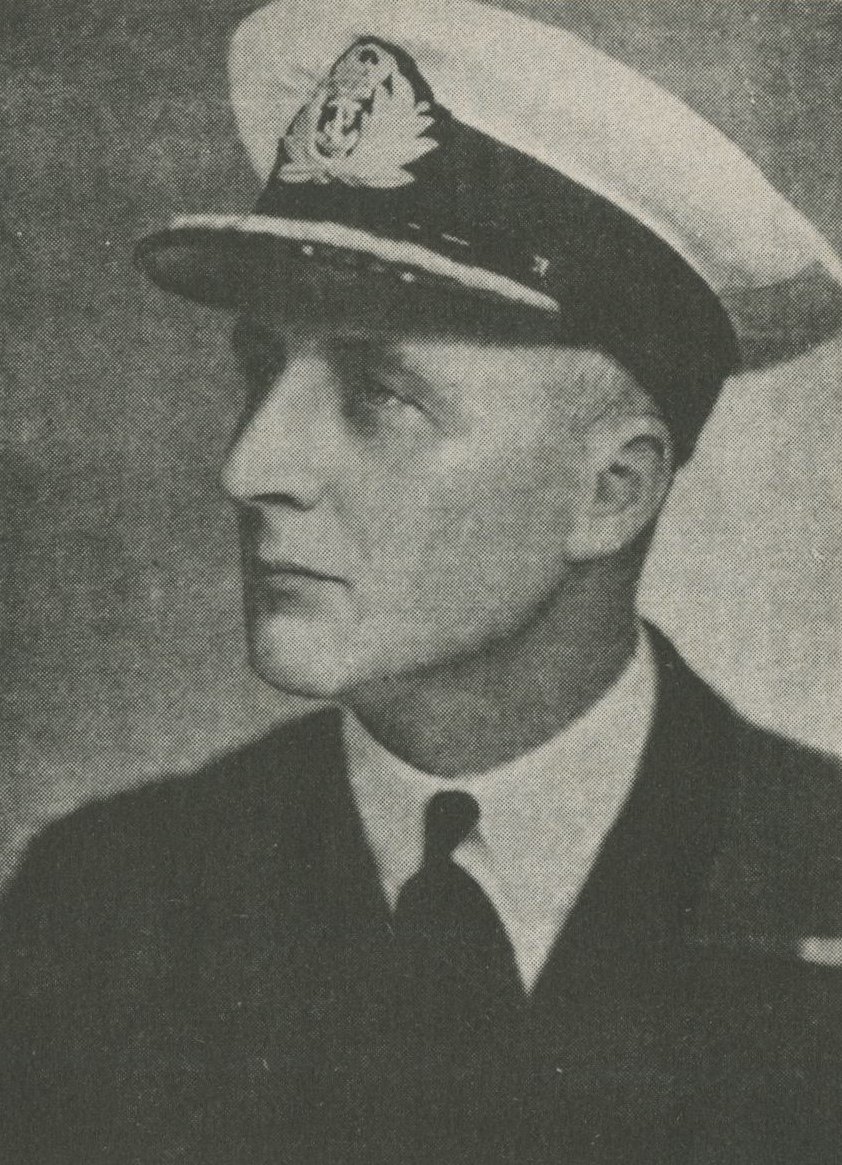Commodore Alvord Sydney Rosenthal

By JS Sears
Alvord Sydney Rosenthal was born on 16 January 1901 at Lewisham, Sydney, second of three sons of Australian-born parents (Sir) Charles Rosenthal, architect and soldier, and his wife Harriet Ellen, née Burston. Alvord was educated at The King's School, Parramatta. In 1915 he entered the RAN College, at Jervis Bay, from which he graduated in 1918.
Promoted Midshipman on 1 January 1919, 'Rosie' joined the battleship HMS Ramillies in May and was present at Scapa Flow, Orkney Islands, Scotland, when the German fleet was scuttled on 21 June. From February 1920 Ramillies operated in the Bosporus Strait and the Black Sea during the Russian Civil War. Rosenthal completed his training in Britain and was promoted Lieutenant in October 1923. Back in Australia, he served in the destroyer HMAS Anzac, and as assistant surveyor in HMAS Geranium.
On 17 December 1925 at Holy Trinity Church, Balaclava, Melbourne, Rosenthal married Audrey Fleming (d.1958) with Anglican rites. Promoted Lieutenant Commander in October 1930, he was appointed to command the destroyers HMAS Waterhen in 1933 and HMAS Vendetta in 1934. Although his superiors had reservations about his ability, he proved an outstanding seaman when he took Voyager to sea in a gale on 18 June 1935 to search for a missing ship. On 21 November 1935 Rosenthal joined the cruiser HMAS Canberra. His performance in that ship earned him promotion to Commander in January 1937, but his record in Waterhen and Vendetta counted against him: on 31 January 1937 he was transferred to the auxiliary list and appointed District Naval Officer - South Australia.
Following the outbreak of World War II Rosenthal was placed in command of the armed merchant cruiser HMAS Westralia, which escorted convoys in Australian and Netherlands East Indies waters. In May 1941 he took command of the new destroyer HMAS Nestor, part of the force which hunted down the German battleship Bismarck. Nestor then joined Force H in the Mediterranean where she narrowly escaped being torpedoed by a submarine on 21 July. Three days later the convoy she was escorting was attacked by Italian motor torpedo boats which hit the troop ship Sydney Star. Rosenthal skilfully embarked the troops, convinced the master to keep the ship afloat and escorted her safely to Malta. For his courage and resourcefulness he was awarded a Distinguished Service Order (DSO).
On 15 December 1941, south of Cape St Vincent, Nestor sighted the German submarine U-127 on the surface and sank her with depth charges. Rosenthal won a bar to his DSO for his part in the action. Nestor sailed for five months with the Far Eastern Fleet before sailing for the Mediterranean to take part in operations to re-supply the island of Malta. On 15 June 1942 she was damaged near Crete when straddled by two heavy bombs, attempts to tow her to Alexandria failed and she was sunk next day.
From October 1942 until November 1944 Rosenthal served as Naval Attaché in Washington, where Sir Owen Dixon considered him "an unqualified success". He was promoted Acting Captain on 29 January 1945 and appointed Captain of Garden Island Dockyard, Sydney. After the war ended, he served at Navy Office, Melbourne, as Director of Naval Reserves (1946-56) and Director of Studies for the industrial mobilisation course (1956-58). In 1951 he was appointed as an Officer of the Order of the British Empire (OBE) and placed on the emergency list. Granted the honorary rank of Commodore in April 1960, he retired from the Navy on 16 January 1961.
Five foot 11 inches (180cm) tall and athletic in build, Rosenthal was cheerful and easy-going when off duty, but at sea he drove his ships hard. On the bridge he developed into a decisive commander, a meticulous navigator and a capable ship-handler. He enjoyed manual work and took a keen interest in the mechanical efficiency of his vessels. A committee member (from 1959) of the Naval and Military Club, Melbourne, he tried his hand at a business venture without success. At St Andrew's Presbyterian Church, Frankston, on 8 April 1960 Rosenthal married Alison Lucy Urquhart, née Platts, a schoolteacher and a divorcee. He spent his retirement at Frankston, indulging his hobby of model making. To some, he seemed something of a recluse. Survived by his wife, and by the two sons of his first marriage, he died on 20 July 1975 at Heidelberg and was cremated.


